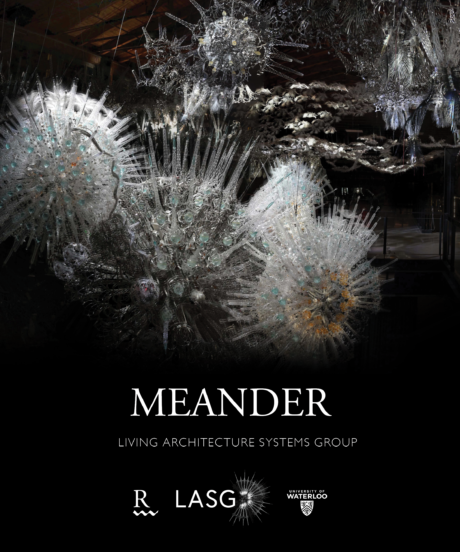
Meander
By Philip Beesley & Living Architecture Systems Group
Meander is a large-scale immersive testbed environment constructed within a historic warehouse building at the centre of a residential highrise development in Cambridge, Ontario. The meshwork scaffolds which comprise the testbed are organized as a series of species within an artificial ecosystem, gently flexing and responding to the movement of viewers. Similar to natural environments such as rivers and clouds, large groups of parts pass physical impulses and data signals back and forth, enabling the entire environment to work as an interconnected whole. The innovations in Meander suggest ways of making adaptive, sensitive buildings of the future.
The geometric structures seen in Meander use interlinking, flexible lattices that behave like textiles and natural shell structures. Sensors embedded within the environment signal the presence of occupants, and send ripples of light, motion and sound through the system in response. Software is organized in clusters of interconnected groups that can communicate with neighboring groups resulting in global behavior connections throughout the system. By creating artificial environments that can learn, this research might help develop new mutual relations and healthy exchanges with urban environments.
The project includes an immersive distributed soundscape developed in collaboration with the Netherlands-based group 4DSOUND. The composition is carried within arrays of custom speakers embedded throughout the environment, making constantly-shifting sound that responds to visitors.
Alongside the sculpture, a Meander STEAM curriculum foregrounds a space where young learners can engage in a collaborative web of science, technology, engineering, arts and math to playfully form new solutions for sustainable technology and design.